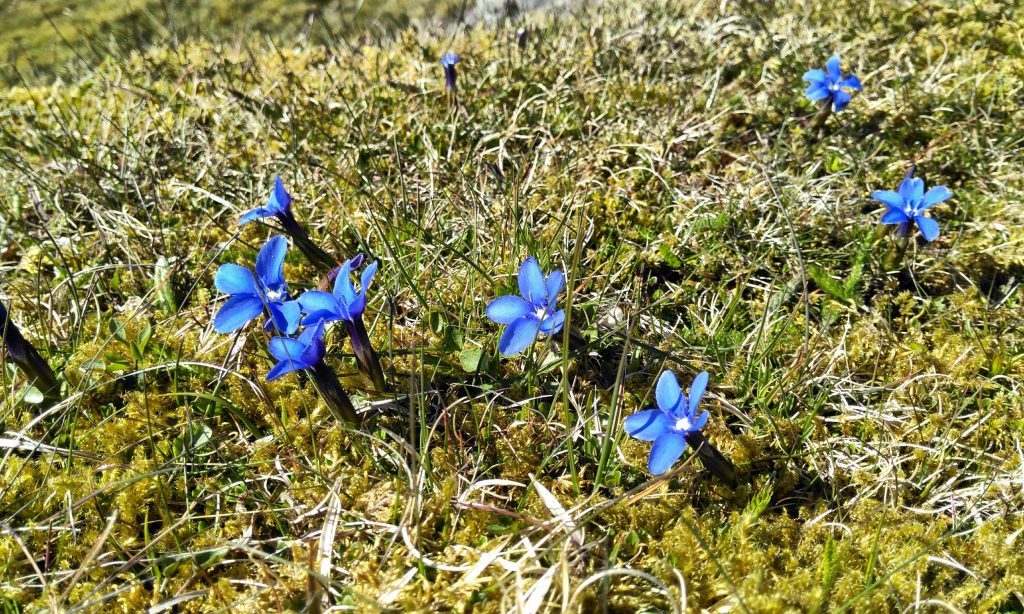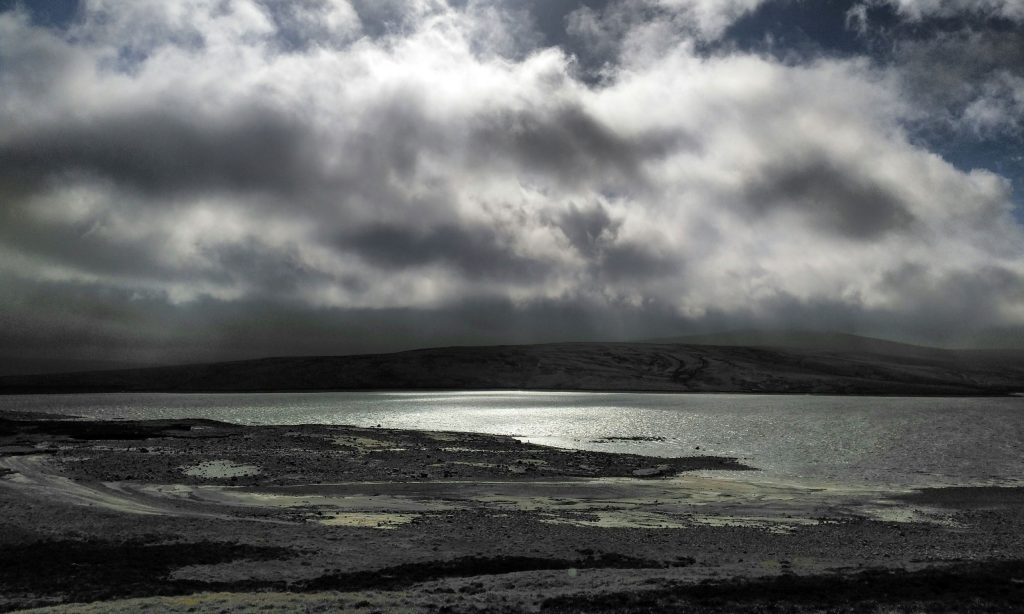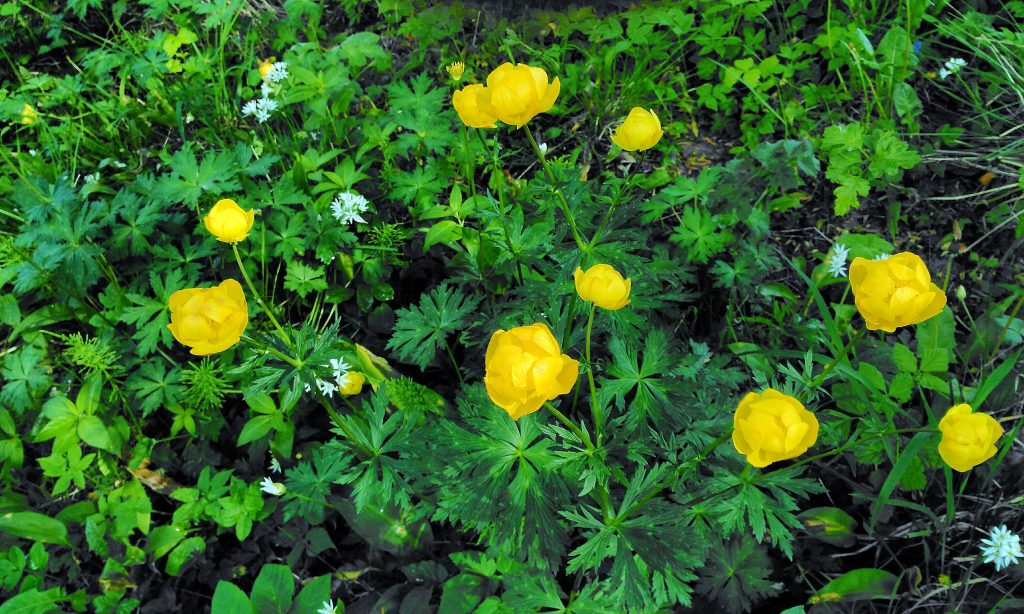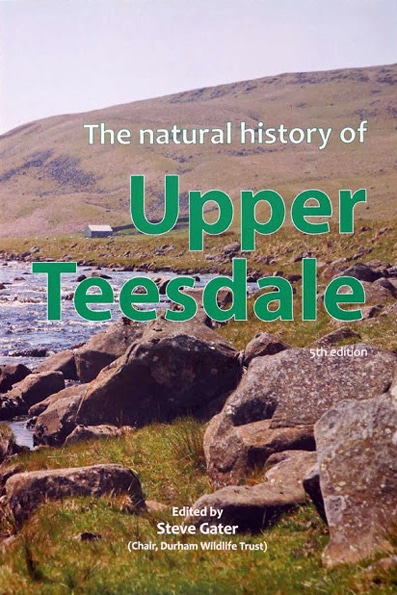Plants and Botany
The range of plants in upper Teesdale are famous. It is the only habitat in Britain of the spring gentian (Gentiana verna) and is home to many other rare plants, including nine species of lady’s mantle (Alchemilla), ferns, mosses, liverworts and lichens. This makes it an area of major scientific importance.
Please respect these special plants and keep to paths so that they are not trampled. Kayakers should follow the marked entry/exist points to the river Tees.
These rare plants are a relic of the vegetation that covered Britain shortly after the ice melted about 10,000 years ago. Mountain avens, alpine bistort and northern bedstraw are all examples. This is partly due to the upper dale’s latitude and altitude, with plants of the arctic, the Alps and southern Europe all represented.

Geology has played an important part: when hot, molten lava it met layers of limestone in produced ‘sugar limestone’ in the upper dale. Outcrops of this unusual crumbly medium on Widdybank Fell and Cronkley Fell support a rich range of plants including lime-loving grasses and sedges, common rock-rose, spring sandwort, violets and mountain avens as well as the spring gentian. To see examples of these, park at Cow Green and take the marked walk. On the left are some areas with wire fencing – these are ‘exclosures’ designed to protect the plants.
Cow Green reservoir was built in the 1960s to provide a controlled source of water for the industries on Tees-side. Acres of vegetation were submerged, including the habitats of rare plant communities. Samples were taken before the basin was flooded and sent to research centres in the UK, North America and Russia. Two major collections were also sent to Durham and Manchester universities.

Changes in agricultural practices in the last fifty years, mainly the application of articifical fertiliser, the use of tractors and changes in the type of stock have affected the plant communities. However, the dale still has the greatest concentration of herb-rich upland meadows in England. Almost 100 different kinds of flowering plants have been recorded, including wood cranesbill, the unusual spires of alpine bistort, eyebrights, great burnet, orchids. May-July is the best time to see the wonderful and rare sight of meadows full of dots of colour. A good example is Hannah’s Meadow in Baldersdale by Mickleton, home of the late Hannah Hauxwell.
In wetter areas you can find the large nodding purple heads of melancholy thistle, deep rusty-pink water avens, marsh valerian and marsh orchids and the striking large yellow globe-flower, known as ‘double dumplings. Another rarity to be found near the river is the shrubby cinquefoil, a small shrub covered with yellow rose-like flowers and saw-wort with its distinctive serrated leaves.
Work on reintroducing upland meadow species is underway, led by the AONB. This began with collecting seed mechanically and sowing it into adjoining meadows. Through the ‘Plugging the Gaps’ project, volunteers have hand-collected seed and raised them into small plugs that are then planted out.

As you travel up the dale, pastures leading onto the fells boast the bright blue spring gentian, Scottish asphodel, sneezewort, heath bedstraw, deer grass, bird’s eye primrose and alpine bartsia. Plants of scientific significance include hair sedge and false sedge, variegated horsetail and sea plantain.
Patches of natural woodland have survived, including the juniper ‘forest’ towards and above High Force. Here also is the fragrant lemon-scented fern, oak fern, beech fern and male fern. Upland areas have acid peat with bog moss (Sphagnum) and heathland. The importance of sphagnum moss in preventing peat erosion, capturing carbon and reducing rain run-off is now recognised and work is underway to reinstate and increase the moss. If you are lucky you may see the beautiful, carnivorous sundew, with its delicate fringed leaves.
FURTHER INFORMATION

The Natural History of Upper Teesdale, Durham Wildlife Trust 2017. Celebrating the flora and fauna of Upper Teesdale, the book can be purchased for £10 with a £2 postage and packing charge. Copies can also be ordered by phone or email from the Trust on mail@durhamwt.co.uk or 0191 584 3112.
The Wild Flowers of the Tees Bank, a calendar guide to our ancient flora, Upper Teesdale Botany Group and North Pennines AONB, 2017 A handy guide with colour photographs, listing the flowers you can see each month from the footpath between Wynch Bridge and Holwick Head Bridge. The Wild Flowers Of The Tees Bank, produced by Dr Margaret Bradshaw and Geoff Herbert, is aimed at walkers and others who enjoy Teesdale’s outdoors and is available from Bowlees Visitor Centre and elsewhere in the Dale, priced at £2.



